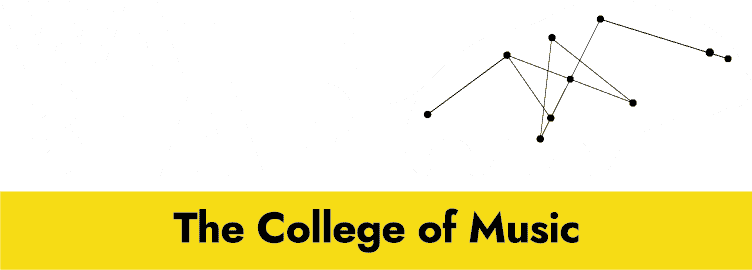JOIN US SEPTEMBER 2024 - APPLY TODAY OR BOOK YOUR PLACE ON ONE OF OUR OPEN DAYS IN BRIGHTON OR SHEFFIELD
JOIN US SEPTEMBER 2024 - APPLY TODAY OR BOOK YOUR PLACE ON ONE OF OUR OPEN DAYS IN BRIGHTON OR SHEFFIELD
Here at WaterBear, we’re ever-mindful that the music business keeps changing. Also that, as Charles Darwin once said, “…those who survive are the ones who adapt best to the new conditions.”
In this blog I’ll be looking at how streaming services have changed the landscape and also how up-and-coming artists and acts can use the platforms to their advantage. Spotify, for example, has recently opened up the pitching process to those in the independent sector (via their Spotify for Artists portal), which provides valuable opportunities for exposure, play and revenue.
I’ll also be interviewing an industry expert for his insights, expertise and take-away top tips for you. Tim Ferrone is the founder and owner of Wrapped Up Music (www.wrappedupmusic.com). Wrapped Up Music provides a scalable campaign management service for labels, managers and artists. Tim has over eighteen years of music business experience, having held various marketing roles at EMI, Universal International and Ministry of Sound, as well as spending 7 years as an independent artist manager. He’s got some useful advice for making the most of Spotify and similar services.
The music business used to rely heavily on radio airplay, EP & LP sales, along with concerts, gigs, and PR appearances. The Internet has changed that.
Peer-to-peer file sharing services – like the Napster and its successors back in 1999 and the early 2000s – led to new kinds of piracy which hit sales hard. People blithely ripped artists’ and labels’ material and shared it, usually as conveniently-sized MP3s. This gave users the chance to accumulate larger libraries of music than used to be the case, who filled their shiny new iPods with it. But it also created a mindset that tended to see music acquisition and play as something that didn’t need to be paid for.
The impact on the industry was massive! As the New York Post reported in April 2018, by 2014 music sales had fallen by 40 percent to $14.3 billion in the 15 years since 1999, when the rise of music file-sharing service Napster ravaged sales of CDs and the development of download services like Apple iTunes failed to offset declines.
The music business HAS fought back, partly by enforcing copyright protection & legislation, and by creating free or affordable subscription models, legal alternatives to the P2P model and services, the most successful of which have been digital music streaming services, supported by advertisements or subscription. Take-up for these services is rising.
Most famous amongst the music streaming services is sector pioneer Spotify, which launched back in 2008. Other services do exist, and some of the major players aren’t yet widely-known internationally, like the massive Net Ease from China, which has close to half a billion users and offers a music streaming and download service.
Also, although video-oriented, YouTube has a huge user base of over 1.5 billion users and often gets used to stream music. This year, the company has rolled out a specific YouTube Music service.
| YouTube | 1.5 billion | Google-owned video-hosting platform, now venturing into music-dedicated streaming |
|---|---|---|
| NetEase | 400 million | Chinese provider, offering an on-demand music streaming service |
| SoundCloud | 175 million | |
| Spotify | 170 million | Sector pioneer, with about half its users paying for premium access |
| iHeartRadio | 100 million | |
| Pandora | 74 million | |
| Gaana | 50 million | Indian streaming platform |
| Apple Music | 50 million | |
| Anghami | 33 million | Successful region-specific streaming music platform covering Northern Africa & the Middle East |
| Deezer | 14 million |
There are other streaming services such as Mflow, Grooveshark and LastFM.
Streaming services have all helped to revolutionise the way listeners discover, choose, access and consume music. It’s also changed how artists and labels connect with their audiences and opened up new markets internationally.
The commercial value of the online streaming services has become apparent, and had real impact. One benchmark is that this year (2018), the online streaming services overtook physical sales and digital downloads for the first time, according to a report by the IFPI (International Federation of the Phonographic Industry). According to the IFPI, in 2017 subscription-based streaming revenue accounted for 38% of all recorded music; that’s an increase from the 29% in the previous year. Total revenues for 2017 were $17.3 billion (up 8.1% from the previous year).
I asked industry expert Tim Ferrone (of Wrapped Up Music) for his perspective and advice on how to take advantage of Spotify and other streaming services
“Not just Spotify, but all streaming platforms I would argue – Apple Music, Deezer, and a host of others. Why? For a number of reasons. Firstly, because streaming has become the principal means of musical engagement for a younger audience. So if you've any aspirations for engaging an audience under the age of 40 (it’s not just the kids you know!), you simply have to play the game. As a result of that, streaming has become the foremost metric by which success is assessed.
Like it or not, publicly-viewable data (most obviously social media followers, likes, etc.) is available for anyone, enabling anyone to try to gauge the relative fanbase size of any artist. Ideally your social media will be sizeable too, but if your streaming numbers stack up well, then that conquers all.”
“Via a distributor, or most often in the independent sector an aggregator, such as CDBaby, Ditto, Tunecore, AWAL, etc. Upload your music and artwork via one of their platforms, then either for a percentage commission, or flat fee, they will make your music available at a week or two's notice on as many digital platforms worldwide as you're likely to be aware of, and a whole lot more besides.”
“Yes, but don't take my word for it! Google’s Music Business Worldwide Perrin Lamb read the article and dissected the numbers. Yes, you have to amass some big numbers to make it pay, but rest assured, streaming DOES generate revenue for artists. And if forecasts about market penetration (i.e. the breadth of use of streaming platforms worldwide) are even remotely accurate, the sum totals are only likely to get bigger.”
“Very! If one assumes the mindset that streaming is the predominant means of music discovery, then playlists are the gateway to that discovery. They are the bus onto which a track can jump upon, in order to be dropped off at a potentially enormous number of stops along the way. Each of those stops represents a potential fan. What’s not to like..?”
“Playlists break down into two types – those that are algorithm-based (such as Discover Weekly), meaning they are automatically generated by a complicated formula, and those that are hand-picked by people, known as curated lists (such as New Music Friday). Ideally, you want to feature on both types.
“The former are incredibly accurately targeted as every individual streaming user has their own digital fingerprint which gets more and more accurately synchronised with your musical preferences the more you utilise the platform. The algorithm tracks your preferences and matches it to that of people with similar tastes.
“Spotify has some 180 million users and about half pay for the premium service right now, so as you can imagine, they have lots of data with which to hone their recommendations. The net result is that people all over the world, who would never otherwise have found your artist, now have that artist dropped right in front of them on a rotating, weekly basis.
“The curated lists are hand-picked by a small team of experts working in every major recorded music territory in the world. They are as a result, pitchable, just like any other part of the music business, be it radio, press, blogs or whatever.”
“The good news is that Spotify have literally just opened up the pitching process to those in the independent sector via their Spotify for Artists portal.”
You can find details of the process (currently in beta as we go to press) here: Artists Spotify
Spotify themselves say: “Our new beta feature gives artists, labels and teams an easy way to submit unreleased music directly to our editorial team for playlist consideration.”
“Ministry of Sound certainly felt so a few years back with the debut London Grammar album, the argument being that their lack of streaming presence forced people into downloading the album or buying the CD. However that was then - this is now. Downloads are in decline, as are CD purchases, so the short answer is not really.”
“Streaming will be understood and used by a much broader range of users than currently, and incorporate elements of audio visual content as well. We won’t just be listening on our smart phones.”
“Streaming platforms are by their nature single track, rather than album-based. In fact, the playlist has effectively superseded the album in the streaming world. But the album is still the principle means of artistic expression, and rightly so. The impact of releasing one song, or a whole album can be utterly negligible, or help make a superstar, and all points in between. But any truly aspiring artist has to be tantalised by the latter possibility I’d have thought… “
“Get onto one or more streaming platforms like Spotify, and get your profile working for you. The folk at Spotify have very kindly made a series of short videos available detailing exactly how you might want to do exactly that. Check out this link…” Introducing The Game Plan
Remember: For an artist or band, getting added to a playlist that commands a large following can be a huge break or boon. Spotify, for instance, hosts some 2 billion individual playlists. Some get curated by human beings, others assembled by analytics and algorithms that track users’ listening patterns and deduce their preferences.
Spotify’s most popular, and influential, playlists (like Discover Weekly and New Music Friday) have arguably taken up the role of the traditional Top 40 and a place in them can be seen as today’s equivalent of a chart hit. Getting placed on a key playlist thus provides great exposure. Artists and bands need to understand how this could help make or break them.
An industry shift is underway. An artist can now make money from day one, instead of having to wait for their album to be released. It’s a long tail market too. You don’t have to be in the top 200 to make money. Many smaller artists/bands may have failed to make into that tier, yet still been streamed millions of times – that can bring in hundreds of thousands of pounds.
“Music Streaming is Now The Industry’s Biggest Revenue Source”
NY Post/Reuters article (24th April, 2018)
“The Top 10 Streaming Music Services by Number of Users,”
Forbes article (25th May 2018)
Spotify
Share New Music For Playlist Consideration
Many thanks to Tim Ferrone (of Wrapped Up Music) for talking to WaterBear

- ‘Water bear’ is the common name for a Tardigrade.
- Tardigrades are micro creatures, found everywhere on earth.
- They are the most resilient creatures known.
- They can survive and adapt to their surroundings, even in outer space.
- Their resilience and ability to adapt and survive inspires us in everything we do. We love them.


WaterBear Education Ltd, Hanover House,
118 Queens Road, Brighton BN1 3XG, UK Map
Email: [email protected]
Tel: +44 (0) 1273 726230
WaterBear Sheffield, Unit 4, Gatecrasher,
49 Eyre Lane, Sheffield S1 4RB, UK
Email: [email protected]
Tel: +44 (0) 1143 992720

WaterBear Education Ltd, Hanover House,
118 Queens Road, Brighton BN1 3XG, UK Map
Email: [email protected]
Tel: +44 (0) 1273 726230
WaterBear Sheffield, Unit 4, Gatecrasher,
49 Eyre Lane, Sheffield S1 4RB, UK
Email: [email protected]
Tel: +44 (0) 1143 992720
- ‘Water bear’ is the common name for a Tardigrade.
- Tardigrades are micro creatures, found everywhere on earth.
- They are the most resilient creatures known.
- They can survive and adapt to their surroundings, even in outer space.
- Their resilience and ability to adapt and survive inspires us in everything we do. We love them.
